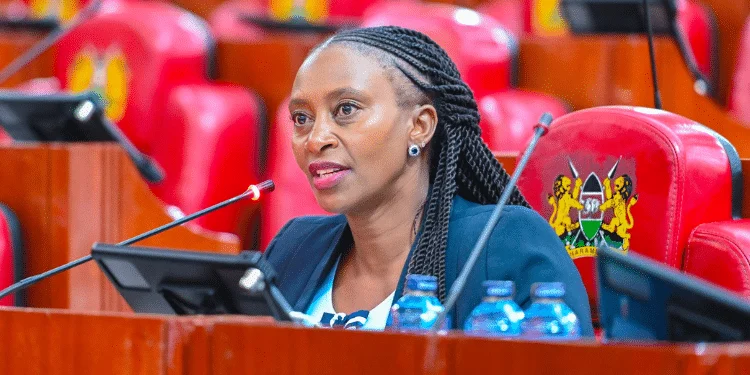The government has issued guidelines for construction of 9,000 Grade 9 classrooms and integrated learning resource centres as part of the larger perspective to have 16,000 completed by 2025.
A memo signed by Basic Education Principal Secretary (PS) Dr Belio Kipsang addressed to all regional, county and sub-county directors of education reveals that the ministry, through the Kenya Primary Education Equity in Learning (KPEEL) programme funded by the World Bank, will have the programme begun as soon as contracts are signed.
Kipsang said the classrooms will be constructed for refugee host communities as well as the non-refugee settings in existing schools as per need based on the 2021 School Infrastructure Investment Plan (SIIP) and the established standards for classroom construction.
He said that in order to ensure timely completion of the projects and to enhance efficiency and transparency, the beneficiary schools are required to follow some guidelines, one of which being that school heads are to open and operate a specific project account bearing signatures of the chairpersons of the Board of Management (BoM), Junior School Committee, and Parents Association. The signature of the school head is mandatory in this case.
Schools are required to adhere to the designs and the Bill of Quantities (BQs) provided by the Ministry of Education (MoE). The quality of the materials to be used will be as per the specifications in the BQs provided.
School heads are supposed to ensure that the financial/ accounting documents and summary of transactions for funds received and expenditures relating to the project are well supported. This will include payment vouchers, invoices, cash sale vouchers, summary of receipts and use of funds, bank statements, and minutes of board and SIC meetings.
The heads of institutions must adhere to the public Procurement and Assets Disposal Act, 2015 and procure works as stipulated under Section 91. (1)& (2) and Section 92.
Similarly, the head teachers should ensure that the environmental and social safeguards management are designed properly to aid in management of risks and improve the project’s environmental and social performance through risk and outcome –based approaches. This includes child protection, safety of learners as well as waste management.
The school management shall ensure classrooms offer free access to persons with disabilities.
Belio directed that the order of coordination and implementation of the projects will be from the school level, sub-county level (SCDEs), county level (CDEs), regional level (RDEs), and national level (MoE Headquarters).
“The SCDEs will be expected to report the progress of the construction status on a regular basis to the CDEs, who will in turn escalate an analysed report to the RDEs…The Directorate of Junior Education will have technical officers attached to every region to coordinate and compile the reports from the Regional Directors every fortnight which shall be used to brief the senior Management Team,” the memo reads in part.
Earlier this month, Belio, speaking at the Rift Valley Regional Commissioner’s plenary hall in Nakuru, announced that the government is looking to construct 16,000 classrooms across the country in readiness for the transition of learners to Grade 9 next year.
He revealed that the World Bank will provide an additional Ksh9 billion towards the construction of 9,000 classrooms, revealing that additional classes will be built through the National Government Constituency Development Fund (NGCDF).
The 2025 Grade 9 class is the pioneer Junior Secondary School (JSS) and Competency Based Curriculum (CBC) cohort. It is domiciled in primary schools across the country.
YOU MAY ALSO READ:
Relief as government disburses second term capitation to schools
By Vostine Ratemo
You can also follow our social media pages on Twitter: Education News KE and Facebook: Education News Newspaper for timely updates.
>>> Click here to stay up-to-date with trending regional stories






